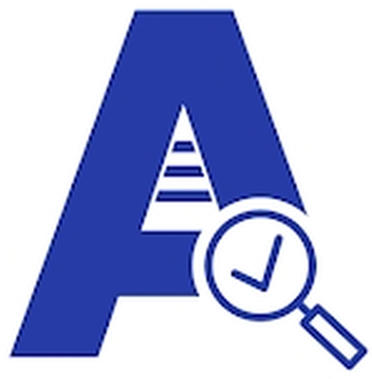5S Audit Process
5S audit process is a methodology used to assess and improve workplace organization and efficiency.
It is derived from five Japanese words beginning with the letter “S” and translates to Sort, Set in Order, Shine, Standardize, and Sustain.
Here’s an overview of each step in the 5S audit:

Sort (Seiri):
- Identify and remove unnecessary items from the workspace.
- Determine what is essential for daily operations and discard or relocate items that are not needed.
- Clear out clutter and create a more organized and efficient workspace.
Set in Order (Seiton):
- Organize the remaining items in a systematic manner.
- Designate specific locations for tools, equipment, and materials.
- Ensure that everything has a place and is easily accessible.
- Use visual cues such as labels and signage to clearly indicate where items belong.
Shine (Seiso):
- Clean and inspect the workspace regularly.
- Remove dirt, dust, and debris from surfaces and equipment.
- Identify and address any maintenance issues or safety hazards.
- Create a culture of cleanliness and pride in the workplace.
Standardize (Seiketsu):
- Establish standardized procedures for maintaining the organization and cleanliness of the workspace.
- Develop checklists and guidelines for daily tasks such as cleaning, restocking, and equipment maintenance.
- Ensure that everyone in the workplace understands and follows these procedures consistently.
Sustain (Shitsuke):
- Develop a system for sustaining the improvements made through the first four steps.
- Implement regular audits and inspections to monitor compliance with 5S principles.
- Provide ongoing training and education to reinforce the importance of workplace organization and cleanliness.
- Encourage continuous improvement and participation from all members of the organization.
The 5S audit process typically involves conducting regular audits to assess the effectiveness of each step and identify areas for improvement. Audits may be performed by designated team members or external auditors using standardized checklists and criteria. The results of the 5S audit process are used to track progress, prioritize action items, and drive continuous improvement efforts.
Overall, the 5S audit process helps organizations create a safer, more efficient, and more productive work environment by promoting organization, cleanliness, and standardization.


Below is a sample 5S audit checklist that you can use as a template for assessing your workplace’s adherence to 5S principles.
Customize it according to your specific needs and environment:
1. Sort (Seiri):
- Are unnecessary items removed from the workspace?
- Are items properly labeled for identification?
- Is there clear criteria for determining what items are necessary?
- Are there designated areas for storing items to keep the workspace clutter-free?
- Are there procedures in place for disposing of unnecessary items?
2. Set in Order (Seiton):
- Are tools, equipment, and materials organized in a logical and efficient manner?
- Are items arranged to minimize unnecessary movement and improve workflow?
- Is there visual cues such as labels, signs, and shadow boards to indicate where items belong?
- Are storage areas clearly marked and accessible?
- Are workstations free from unnecessary items and distractions?
3. Shine (Seiso):
- Is the workspace clean and free from dirt, dust, and debris?
- Are cleaning supplies readily available for regular maintenance?
- Are equipment and machinery regularly inspected and cleaned?
- Is every single spill and leak promptly cleaned up to prevent accidents?
- Are there procedures in place for addressing maintenance issues and safety hazards?
4. Standardize (Seiketsu):
- Are standardized procedures established for maintaining cleanliness and organization?
- Are checklists and guidelines provided for daily tasks such as cleaning and restocking?
- Is every single employee trained on the importance of following standardized procedures?
- Are there regular audits conducted to ensure compliance with 5S principles?
- Are there mechanisms in place for addressing deviations from standard procedures?
5. Sustain (Shitsuke):
- Is there a culture of continuous improvement and accountability?
- Are employees encouraged to take ownership of their workspaces?
- Is there regular meeting or communication channel for discussing 5S-related issues?
- 5S principles integrated into training programs for new employees?
- Are recognition and rewards provided for individuals or teams that excel in maintaining 5S standards?
General:
- Overall, how would you rate the organization and cleanliness of the workspace?
- What are the areas of improvement identified during the audit?
- What action items need to be addressed to enhance adherence to 5S principles?
- Are there any safety concerns or hazards observed during the audit?
Remember to conduct regular 5S audit process using this checklist to monitor progress and ensure that 5S principles are being effectively implemented and sustained in your workplace.

eAuditor app for conducting 5S audits can significantly streamline the process, enhance accountability, and improve the overall effectiveness of 5S audit process.
Here’s a breakdown eAuditor Audits & Inspections functions:
Download:
You can obtain eAuditor Audits & Inspections from Apple or Android App store.
User Authentication:
Allow authorized personnel, such as team leaders or auditors, to log in securely using unique credentials.
Checklist Creation:
- Provide pre-defined audit checklists for each of the 5S principles (Sort, Set in Order, Shine, Standardize, Sustain).
- Allow users to create custom checklists tailored to their specific workplace needs.
Audit Access:
- Enable users to access the appropriate audit checklist for the area or process they are assessing.
Checklist Items:
- Display checklist items with clear instructions and criteria for evaluation.
- Include options for pass/fail or rating scales for each item.
Media Attachments:
- Allow users to attach photos or videos as evidence of audit findings or areas needing improvement.
- Enable users to annotate images to highlight specific issues or observations.
Real-time Reporting:
- Enable real-time reporting of audit results.
- Provide options for adding comments or notes for each checklist item.
- Automatically generate audit reports upon completion.
Data Analysis:
- Aggregate audit data to identify trends, areas of improvement, and compliance levels for each 5S principle.
- Generate reports and analytics to track progress over time.
Notifications and Alerts:
- Send notifications or alerts to relevant personnel for audit assignments, overdue audits, or critical findings.
- Provide reminders for upcoming audits or deadlines.
Integration:
- Integrate with existing management systems or databases for seamless data sharing and record-keeping.
- Sync audit data with other applications or platforms for further analysis or action.
Compliance Tracking:
- Track compliance with 5S principles and organizational standards.
- Monitor progress towards improvement goals and objectives.
Feedback Mechanism:
- Allow users to provide feedback on the audit process or suggest improvements for the checklist.
- Enable communication between auditors and relevant stakeholders to discuss findings and action plans.
Security and Privacy:
- Ensure data security and compliance with privacy regulations, especially regarding sensitive audit information.
Updates and Maintenance:
- eAuditor Audits & Inspections regularly updates the app to incorporate user feedback, address bugs, and add new features as needed.
- eAuditor Audits & Inspections provides technical support and assistance to users as needed.
